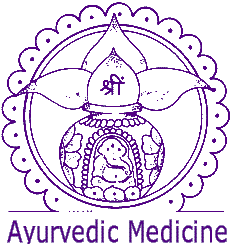
Ayurvedic is an ancient
form of vibrational medicine dating back to early Hindu
philosophy around or before the time of the Buddha. The name is from the
Sanskrit "ayuh" or longevity and "veda" or knowledge.
This energy medicine is the science of life. The ayurvedic approach
involves five senses: sound, sight, taste, touch and feeling.
In the ayurvedic system, each body consists
of five basic elements: fire, water, earth, air and space. The
combination of these elements determines the primary dosha of the body.
There are three main types of doshas: the pitta, the kapha, and the vata.
Each person has all three; however, one or two tend to predominate.
Maximum good health depends on the balance of these influences. Using a
three- finger pulse diagnosis technique, the ayurvedic physician can determine
what remedies are called for.
The practitioner will also ask many questions
regarding the physical, emotional, and spiritual status of the client.
Treatment may involve dietary changes, detoxification using herbal preparations,
aromatherapy, working with gemstones, the use of color, and/or special music.
Bratman,
Steven, M.D. The Alternative Medicine Sourcebook. Los
Angeles: Lowell House, 1997.
Cassileth,
Barrie R., Ph.D. The Alternative Medicine Handbook. New York: W. W.
Norton & Company, 1998.
For further information regarding ayurvedic medicine and related topics, please visit our friends at www.chopra.com.